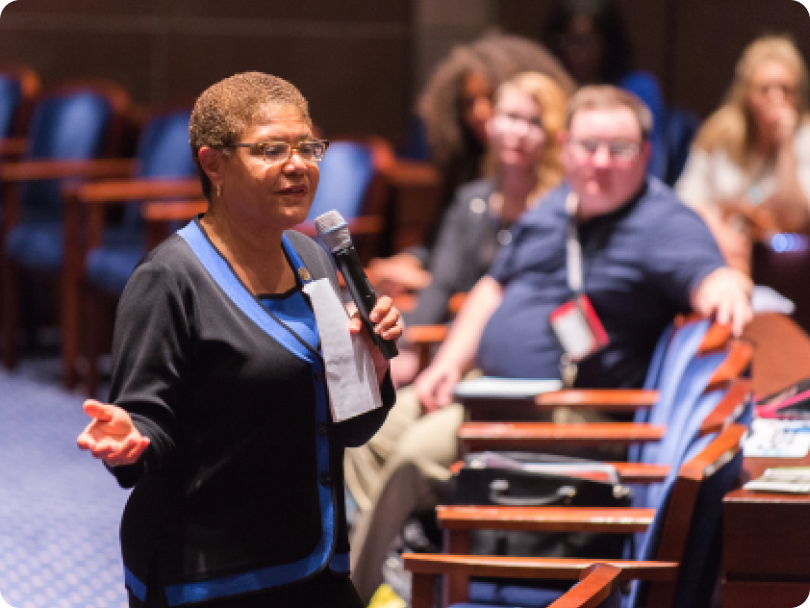Family Preservation
When families face crises — whether due to finances, lack of access to services, or other systemic challenges — children often enter the foster care system not because of abuse, but because their families lack the support they need to stay together. In fact, neglect (often tied to economic hardship) accounts for over 60% of child welfare cases (Children’s Bureau, 2023).
At the National Foster Youth Institute, we believe that family preservation must be a priority in child welfare policy. Keeping families together whenever safely possible leads to better outcomes for children and prevents unnecessary trauma. When we invest in families, we strengthen communities, reduce the need for foster care, and ensure that children grow up with the stability they deserve.
The Impact of Family Separation
Children who enter foster care often experience significant disruptions to their emotional well-being, education, and social development. Studies show that young people who age out of foster care without permanent connections face increased risks of homelessness, unemployment, and mental health challenges (Annie E. Casey Foundation, 2020). By prioritizing prevention and support, we can reduce these risks and create more secure futures for children and families.


A Comprehensive Approach to Family Preservation
Addressing family preservation issues requires a comprehensive approach, including robust prevention services, prioritizing kinship care, enhanced foster family support, resources for transitioning youth, and targeted aid for parenting foster youth. These strategies can improve outcomes and foster resilience.
Prevention Services
Prevention services support at-risk families by addressing poverty, substance use, and mental health challenges to reduce child welfare involvement. The 2019 Family First Act was a significant step forward in federal prevention efforts, but more work is needed to ensure all families have the support they need to stay together. Expanding support systems, services, and addressing areas not covered by Family First, such as economic hardship, is essential to preventing neglect and improving child well-being.
Neglect is the most common form of child maltreatment nationwide. In 2021, 585,000 children were identified as maltreatment victims, with 75% experiencing neglect (Children’s Bureau, 2023). Studies show 85% of families investigated for neglect live below 200% of the poverty line (National Bureau of Economic Research, 2021), and children in low-income households face abuse and neglect at five times the rate of their wealthier peers.
In Los Angeles County, many child removals are classified under “general neglect,” often stemming from poverty rather than intentional harm. Between 4,000 and 6,000 children are removed annually (Los Angeles County DCFS, 2023), with a significant portion attributed to neglect. Misidentifying poverty as neglect can lead to unnecessary removals and family separations. In response, California implemented a 2021 law preventing poverty alone from being grounds for child welfare removals. Differentiating economic hardship from true neglect is crucial to ensuring families receive the support they need without unnecessary intervention.
Prevention Policy Recommendations
1
Congress should change the federal definition of neglect and create comprehensive guidelines that distinguish between abuse (e.g., physical abuse, sexual assault, abandonment) and socio-economic challenges, such as poverty and lack of resources.
2
States such as California, Texas, Iowa, Kansas, and Arkansas have changed their definitions of neglect. Other states should follow suit to prevent unnecessary family separations.
3
Los Angeles County should ensure all stakeholders — including caseworkers, judges, law enforcement, attorneys, and mandated reporters — receive training on these definitions to promote consistency in decision-making.
4
A dedicated committee of lived experience experts, biological parents, advocates, and service providers should be established to create recommendations on programs and resources needed to prevent children from entering care due to poverty.
Kinship Care: A Critical Family Preservation Strategy
Kinship care places children with relatives or close family friends when they cannot stay with their parents, offering greater stability and reducing trauma compared to non-relative placements. In the U.S., about 34% of children in foster care are placed with relatives (Adoption and Foster Care Analysis and Reporting System, 2022). Some states, like Illinois, are considering legislation to prioritize kinship placements, recognizing their benefits for children’s mental health and well-being. However, not all states provide sufficient financial or support resources to kinship care families, often offering them less aid than non-kinship foster families.

In Los Angeles County, kinship care is a priority. The Upfront Family Finding Pilot Project, launched in 2016, has helped place about 60% of foster children with relatives in their initial placement (Los Angeles County DCFS, 2023), reducing trauma. This initiative has contributed to the county’s kinship placement rate of approximately 49%.
Kinship Care Policy Recommendations
1
Congress and the Department of Health and Human Services should require all states to provide equal support for kinship care providers as non-relative placements, including financial compensation, training, resources, and support programs.
2
Kinship and non-relative care placements should have access to free mental health and other support services, including individual and family therapy for all individuals residing in the home.
3
Los Angeles County has led the way in placing foster youth in kinship care placements, but more support is needed to increase placement stability, which continues to be an issue.
4
Data tracking systems do not effectively track why children change placements, making it difficult to understand what additional support is needed to stabilize kinship care placements. The Children’s Bureau should require states to track placement disruptions. California should invest in better data collection methods to better understand what services and support kinship care families need.
NFYI in Action
We are committed to policy change, community education, and youth leadership to ensure that family preservation becomes a national priority because we know that when families are strong, children thrive. By shifting resources toward prevention, kinship care, and targeted family support, we can keep more families together and ensure that child welfare systems focus on supporting families rather than separating them.
These policy recommendations are part of our three-year campaign, Urgency to Act: Unlocking Foster Youth Wellbeing, designed by NFYI staff, youth members, and researchers. Will you join us in reimagining a child welfare system that prioritizes keeping families whole whenever safe and possible?

